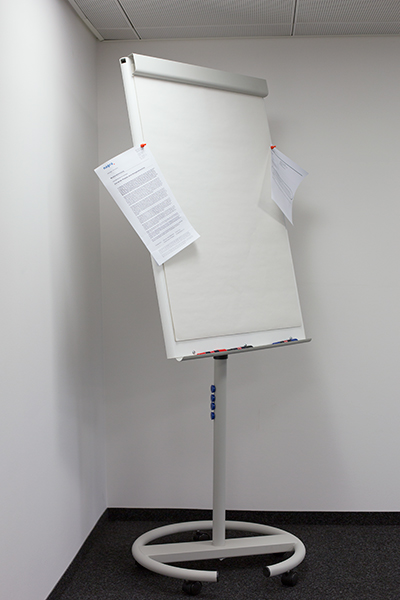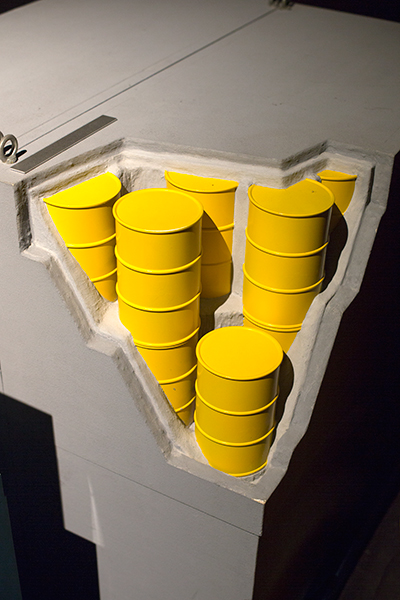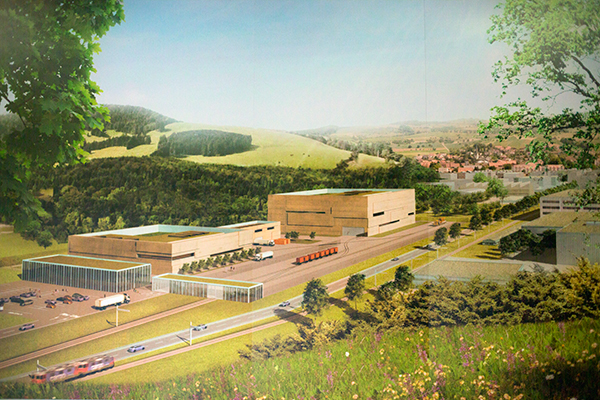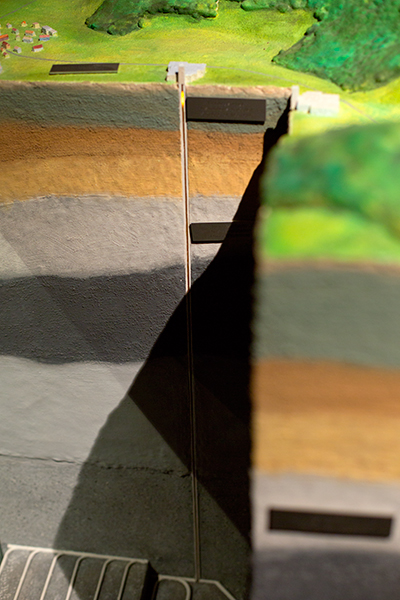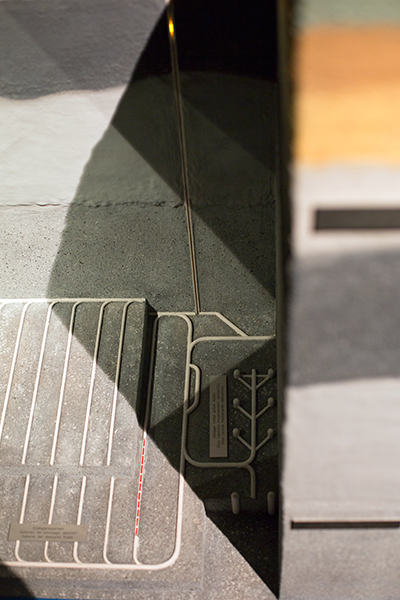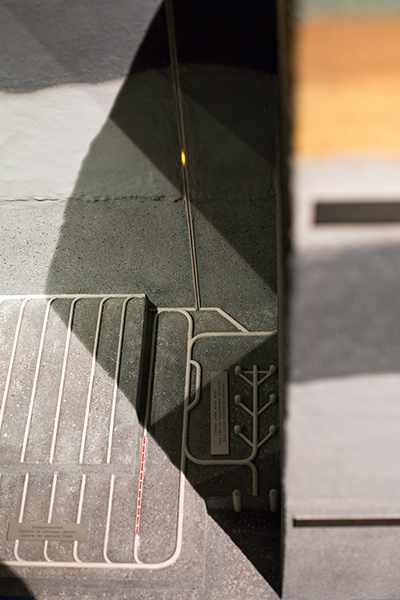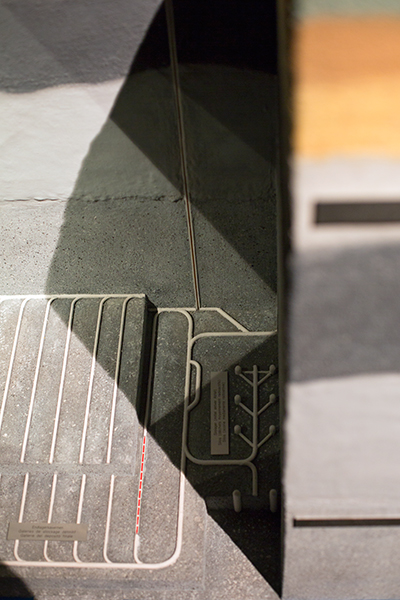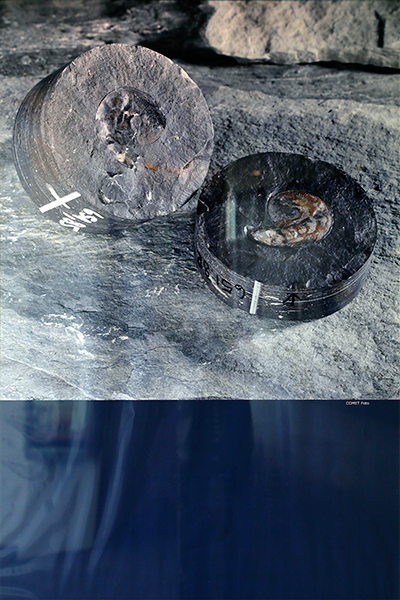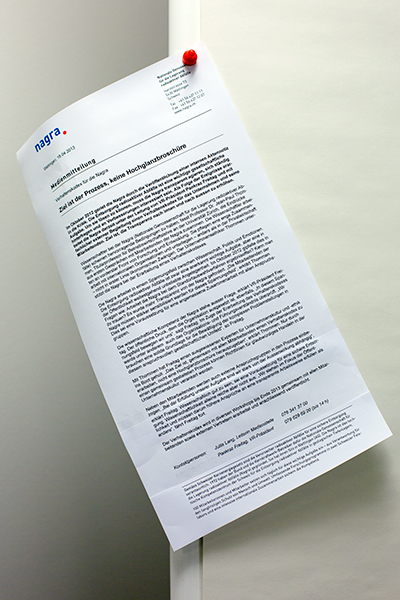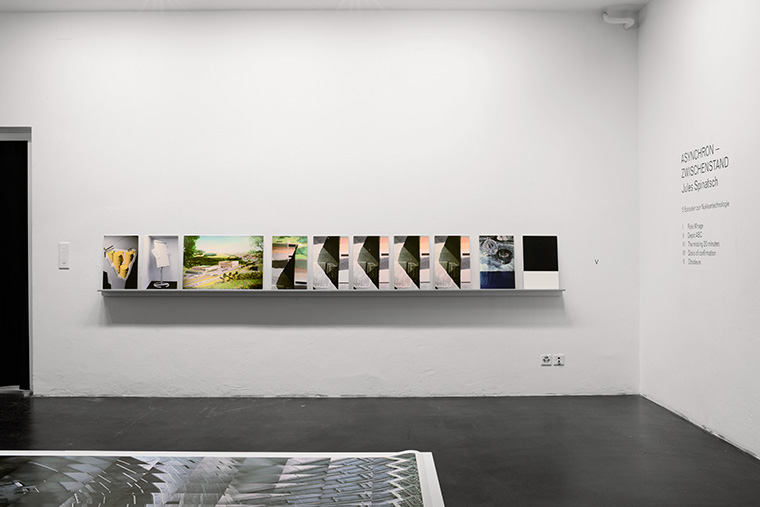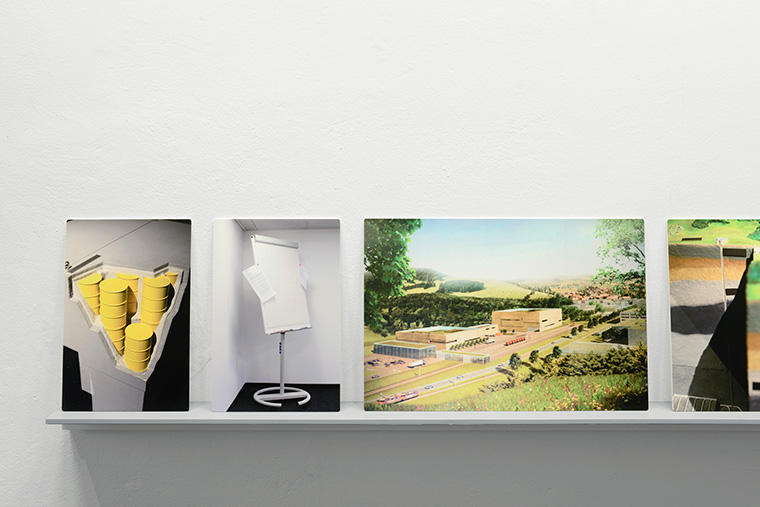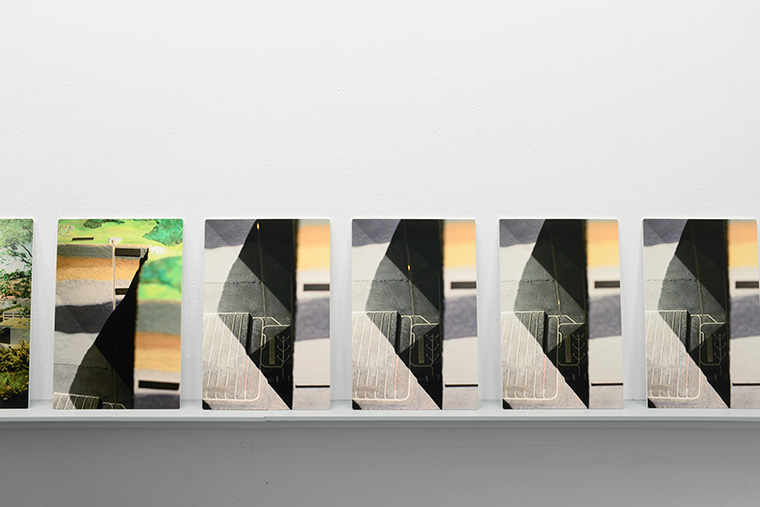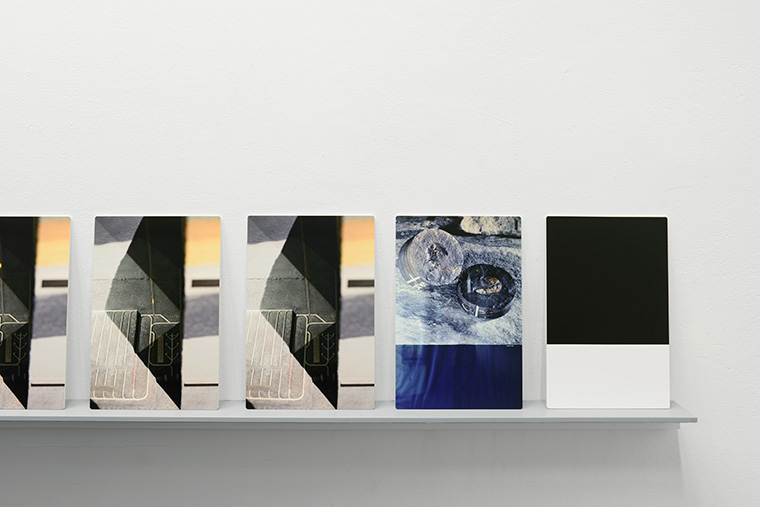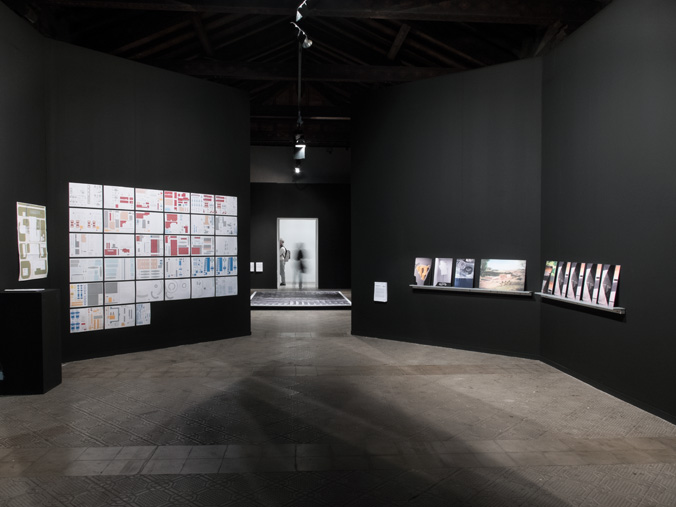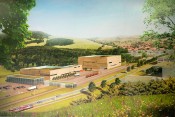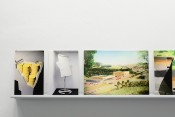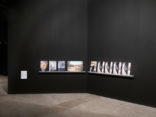V : Obsoleum
Obsoleum ist eine Wortschöpfung von Spinatsch selber (Obsolet und Museum) und umschreibt die Erfüllung des Endlagerwunsches, nämlich einer Verflüchtigung des Themas in der ewigen Dunkelheit des Erdreichs. Obwohl seit ca. 50 Jahren Abfälle produziert werden, gibt es weltweit kein einziges fertig gebautes oder funktionierendes Endlager für schwer radioaktive Abfälle. Das Material befindet sich in Castor-Behältern in Zwischenlagern, oft auf dem Areal der Kernkraftwerke selber. In der Schweiz wird der schwer radioaktive Abfall ins Zwischenlager Zvilag in Würenlingen gebracht, in eine einfache, gut bewachte Halle im Schweizer Mittelland, nahe der AKWs Beznau und Leibstadt.
Gemäss Kernenergiegesetz ist die Nagra damit beauftragt, Lösungen für eine sichere – dem Menschen und der Umwelt verpflichtete Entsorgung der in der Schweiz verursachten radioaktiven Abfälle – zu erarbeiten und zu realisieren. Somit dürfen radioaktive Abfälle der Schweiz nicht exportiert werden. Zudem ist die Nagra dazu verpflichtet, die Öffentlichkeit über Ihre Arbeit zu informieren. Spinatschs Bildtafeln von Endlager Miniatur-Modellen in den Besucher-Zentren von Gösgen und Leibstadt, abstrahieren und demonstrieren der Sicherheit eines Endlagers. Mittels in Sedimentgestein eingeschlossener Leitfossilien wird der Vorgang, einer Beweisführung ähnlich, behauptet. Spinatsch übernimmt diese Analogie. Die Bildtafeln repetieren und verdichten diese lineare Narration. Durch Umstellen der Tafeln lässt sich diese Geschichte kaum variieren, die Marketing-Erzählung der Nagra bleibt unverändert. Einzig das schwarze Quadrat leistet interpretatorischen Widerstand.
V : Obsoleum
The current debate surrounding the disposal of radioactive material is plagued with terminological confusion. A final repository with retrievability is a contradiction in itself. Thus, Jules Spinatsch coined a term of his own: “Obsoleum”, which refers to the (communication) dilemma of Switzerlands
NAGRA, The National Cooperative for the Disposal of Radioactive Waste, or of the topic in general. Obsoleum (from obsolete and museum) describes the fulfilment of the wish associated with the final repository, namely the topic vanishing into the eternal darkness underground, into oblivion. The relatively new retrievability requirement, pertaining to radioactive material that has supposedly been stored away for the last time, turns every final repository into another intermediate repository, but for a duration that is now unknown.
Although radioactive waste has been produced for over 50 years, not one single final repository for highly radioactive waste is completed or functional anywhere in the world. The material is stored and cooled for 20-30 years in Castor containers, often on the sites of the nuclear power plants themselves. In Switzerland, all highly radioactive waste is brought to the Zvilag intermediate repository in Würenlingen, in a simple, well-guarded hall on the Swiss Plateau, near the Beznau and Leibstadt nuclear power plants and close to the German border.
The Nuclear Energy Act stipulates that radioactive material (and thus the problem) can no longer be exported. The NAGRA, founded in 1984, is in charge of developing and implementing solutions for safe disposal of the radioactive waste produced in Switzerland, with a commitment to people and the environment. NAGRA is also obliged to inform the public about its work. Since a few years ago, retrievability of the material from a final repository must also be guaranteed, in case new technologies for processing the radioactive material become available in the distant future.
The plates depicting a final repository model in a visitor centre is intended to convey the current concept of a final repository with retrievability.
The argumentation is based on the analogy between a fossil and radioactive waste: 600 meters below the surface of the earth, enclosed in a particular sedimentary rock an ammonite fossil has remained unharmed for 100 million years. Therefore, this sedimentary rock (Opalinus clay) is also suitable for storing radioactive material until the radiation has abated.
The obsoleum plates adopt this NAGRA narrative primarily without comment, repeating the linear account with a hard beginning, but with an end in obsoleum. Even if the plates are rearranged, this story can hardly be varied at all: NAGRA’s one (and supposedly only) possible marketing narrative remains. Only the black panel offers interpretational resistance; as a consequence of this narrative and fulfilment of the wish associated with the final repository, it can be seen as an illustration of obsoleum. Or indeed as evidence that the retrievability requirement is in fact inadvertently causing light to penetrate the eternally dark obsoleum once again – an obvious contradiction already manifests itself within the concept.
